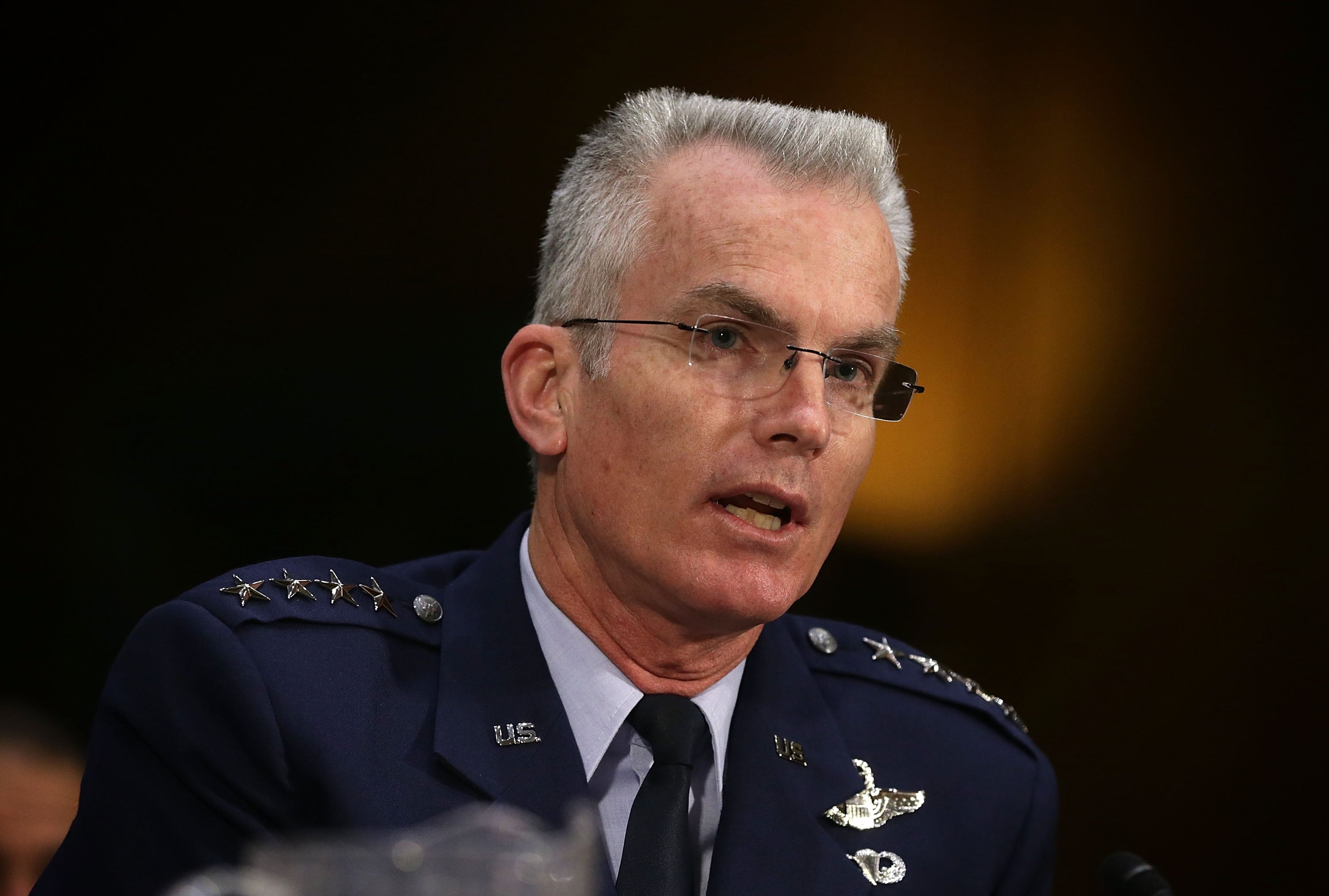WASHINGTON — Gen. Paul Selva, the vice chairman of the Joint Chiefs of Staff, says the Pentagon plans on “increasing” investments in artificial intelligence and man-machine teaming in the fiscal 2019 and 2020 budgets, but warns that department is far from achieving the full capability of those technologies.
Those investments will likely be “modest” in nature, Selva told a breakfast hosted by the Defense Writers Group on Tuesday. But they represent an important continuation of the so-called Third Offset Strategy that was pursued by Selva and former Deputy Secretary of Defense Bob Work through the last few years of the Obama administration.
While that phrase quickly fell out of use under Secretary of Defense Jim Mattis, the ideas of the Third Offset remain alive, Selva said, and can be seen in the investment priority areas laid out in the National Defense Strategy.
“We’ve diminished, not the value of the words ‘Third Offset’ but the prominence of the words ‘Third Offset’ in our rhetoric,” Selva acknowledged. “We’re still fast at work on artificial intelligence, man-machine teaming, trying to figure out how to make sense of the things, the mountains of data that are around us and get at whether or not that effects our battlefield performance.”
RELATED

Andrew Hunter, a former Pentagon official now with the Center for Strategic and International Studies, says that what the National Defense Strategy laid out seems very familiar to the ideas pushed by Work during his Pentagon days.
“It’s pretty clear when it gets into the capabilities they’re looking for, it does look very Third Offset-like, [with the] focus on peer competitors, high-end capabilities,” he said. “So I definitely see strong resonances, stated in a different way, of the Third Offset mindset.”
The vice chairman zeroed in on man-machine teaming as a key area where investments will need to continue to grow in order to really take advantage of the technology. While there have been some experiments so far, it is just the tip of what Selva believes the technology could lead to — or as he put it: “We haven’t cracked the nut on man-machine teaming yet.”
“If you look inside what we’re pushing to aviators, just as a general rule, it’s a hell of a lot of information to absorb. So, man-machine teaming isn’t just about: Could you push the information to the human? It’s: Can you actually make the information make sense to the human, and allow the human to make decisions at greater speed? That last part is the hard part,” he said.
“The human has to decide faster. So parsing the data and how you present it actually matters, and that’s a technology piece that really is going to require some experimentation because you have to have a very high confidence the technology is actually sorting and parsing the right data,” he added. “Wouldn’t it be cool if you could shoot somebody in the face at 200 kilometers and they don’t even know you’re there? That’s the kind of man-machine teaming we really want to get after.”
Hunter does warn that for these technologies to grow successfully, they need strong, continuous investment.
That may be complicated by the realities of the budget.
The Trump administration is expected to deliver its budget to Congress on Feb. 12, just four days after a deadline for Congress to find a long-term budget solution, extend a continuing resolution or shut down the government again.
That the FY18 budget may be unknown by the time the FY19 budget comes out was not lost on Selva.
“There ought to be more than just a little irony in your mind of the fact we’re trying to deliver a proposed budget on time to the Hill when we don’t know what we’re actually going to get for ’18,” Selva said. “This is called gambling. Most of us don’t do it with our own money.”
Deputy Secretary of Defense Patrick Shanahan has said that while the FY19 budget will represent a budget increase, FY2020 will be the Pentagon’s true “masterpiece,” as it will have time to incorporate all the strategic reviews that have been released, or will be released in the near term.
Aaron Mehta was deputy editor and senior Pentagon correspondent for Defense News, covering policy, strategy and acquisition at the highest levels of the Defense Department and its international partners.






